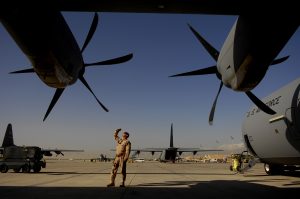When U.S. President Donald Trump stood beside British Prime Minister Keir Starmer at Chequers earlier this month and vowed to “get back” Bagram Air Base in Afghanistan, he reopened an issue many in Washington considered closed. Calling Bagram “one of the biggest air bases in the world,” he warned that “bad things are going to happen” if the Taliban refuse to hand the base over to U.S. control.
The remarks raise pressing questions: Why does Trump, the architect of the 2020 Doha Agreement that triggered the U.S. withdrawal, now want to return to Afghanistan? What strategic objectives would such a move serve? And how might the Taliban respond?
The answers lie in Bagram’s layered history and in today’s shifting great power dynamics. Located in Parwan Province, about 50 kilometers north of Kabul, Bagram was built in the 1950s with Soviet assistance. It later became a linchpin of Moscow’s war effort during the Soviet-Afghan conflict, passed briefly to the Mohammad Najibullah government, and was seized by Ahmad Shah Massoud in the 1990s. The Taliban controlled it until the U.S.-led intervention in 2001 transformed the site into the epicenter of NATO operations against the Taliban and al-Qaida for two decades.
While Bagram was in ruins after being abandoned by the Soviets, the Americans built it into a sprawling fortress of nearly 30 square miles, capable of holding up to 10,000 troops. It featured dual runways, hangars for heavy bombers, advanced medical facilities, and even a notorious detention center dubbed “Afghanistan’s Guantanamo.” At its height, the base symbolized the U.S. footprint in South and Central Asia, complete with fast-food outlets like Burger King and Pizza Hut.
For Trump, Bagram has always held symbolic and strategic weight. As he argued in March, “We were going to keep Bagram, not because of Afghanistan but because of China … it’s exactly one hour away from where China makes its nuclear missiles.” His logic is straightforward: control Bagram, and Washington gains a vantage point to monitor both Iran to the west and China’s Xinjiang region to the east.
This fixation comes against the backdrop of China’s accelerating military rise. By 2030, Beijing’s nuclear arsenal could reach 1,000 warheads; its hypersonic weapons and expanding satellite networks are extending its reach, while Belt and Road projects deepen China’s economic footprint in Afghanistan and South and Central Asia.
Yet the Taliban are not bystanders. They view Bagram as sovereign Afghan soil, and their reaction to Trump’s remarks was swift. Fasihuddin Fitrat, chief of staff of the Ministry of Defense, dismissed talk of a political deal to cede the base: “A deal over even an inch of Afghanistan’s soil is not possible. We don’t need it.” The Taliban’s official statement reiterated Afghanistan’s independence and territorial integrity, reminding Washington of its Doha Agreement pledge not to interfere in Afghan affairs.
Could the United States realistically retake Bagram? Logistically, it would require a massive troop deployment, permanent security commitments, and the risk of reigniting Afghan resistance. Politically, it would further strain relations with Iran, antagonize the Taliban, and likely push China and Russia even closer together.
The U.S. already maintains secure bases in the Gulf: Al Udeid in Qatar and Al Dhafra in the UAE, that offer stable platforms without the quagmire of Afghanistan. By comparison, Bagram looks less like a military necessity and more like a political gesture.
That, perhaps, is the point.
Trump’s vow to “reclaim” Bagram resonates with his domestic audience: it projects toughness, dramatizes his critique of Biden’s withdrawal, and signals resolve against China. Feasibility matters less than symbolism in the unceasing U.S. election cycle.
But while the pledge may be symbolic for U.S. politics, it carries real-world consequences for South and Central Asia. A renewed American presence in Afghanistan would ripple far beyond Kabul, complicating the calculations of neighbors, especially Pakistan. Islamabad would face pressure to quietly facilitate logistics or intelligence support, straining ties with Beijing at a time when the China-Pakistan Economic Corridor (CPEC) remains central to its economic future. At home, any perception of complicity could trigger militant reprisals and deepen public resentment, as seen during past U.S. operations. With the Tehreek-e-Taliban Pakistan (TTP) already active, Islamabad cannot afford to antagonize the Afghan Taliban or reignite border instability.
Trump’s unpredictability only sharpens this dilemma. Despite his growing interest in Pakistan, Islamabad faces a hostile India to the east and a fragile western frontier. Aligning too closely with Washington risks alienating the Taliban and jeopardizing internal stability.
Ultimately, Trump’s Bagram demand is less about Afghanistan and more about U.S. politics. It reflects a symbolic assertion of strength rather than a viable grand strategy. For regional actors like Pakistan, however, the consequences of such rhetoric are all too real.





























